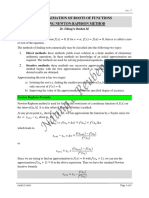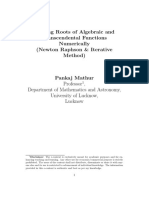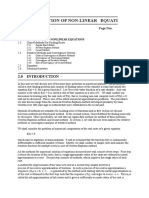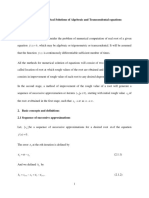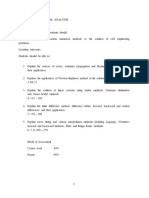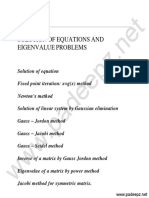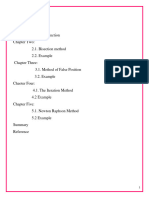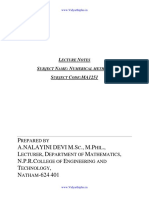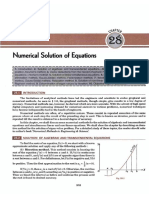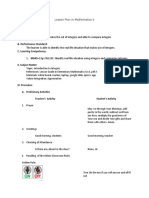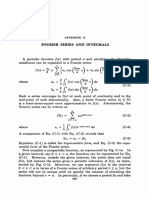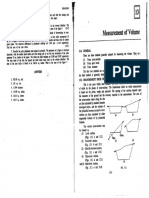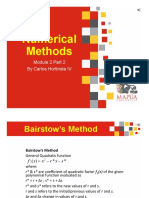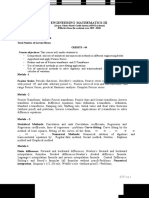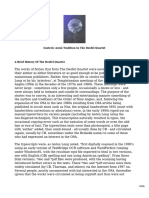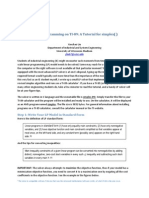0% found this document useful (0 votes)
48 views14 pagesLecture 5
The document discusses the order of convergence of iterative methods for finding roots of functions. It defines the order of a root and provides an example of multiple and simple roots. It then presents the method to check the order of a root by examining the derivatives of a function. Next, it discusses the order of convergence when applying fixed point and Newton-Raphson methods. Specifically, it shows that fixed point converges linearly while Newton-Raphson converges quadratically for simple roots but only linearly for multiple roots. The document proposes a modification of Newton-Raphson that achieves quadratic convergence for both simple and multiple roots.
Uploaded by
siddhantkansal11Copyright
© © All Rights Reserved
We take content rights seriously. If you suspect this is your content, claim it here.
Available Formats
Download as PDF, TXT or read online on Scribd
0% found this document useful (0 votes)
48 views14 pagesLecture 5
The document discusses the order of convergence of iterative methods for finding roots of functions. It defines the order of a root and provides an example of multiple and simple roots. It then presents the method to check the order of a root by examining the derivatives of a function. Next, it discusses the order of convergence when applying fixed point and Newton-Raphson methods. Specifically, it shows that fixed point converges linearly while Newton-Raphson converges quadratically for simple roots but only linearly for multiple roots. The document proposes a modification of Newton-Raphson that achieves quadratic convergence for both simple and multiple roots.
Uploaded by
siddhantkansal11Copyright
© © All Rights Reserved
We take content rights seriously. If you suspect this is your content, claim it here.
Available Formats
Download as PDF, TXT or read online on Scribd
/ 14

